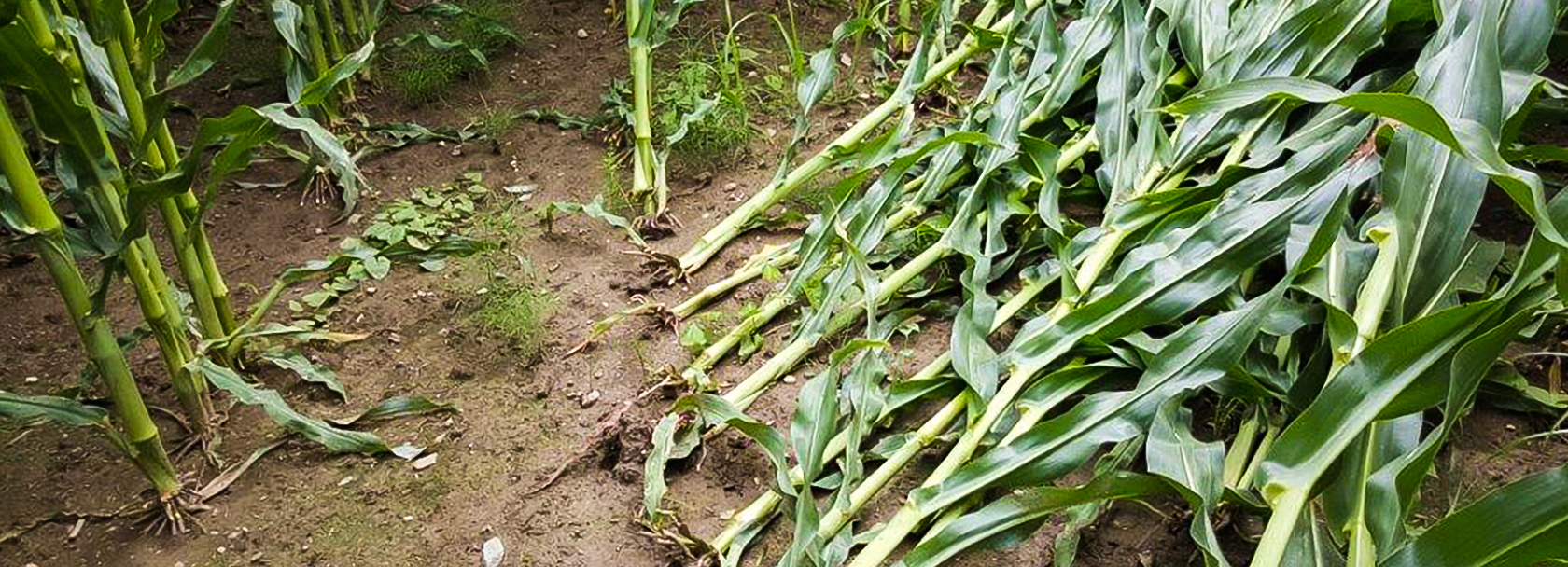Western corn
Control western corn rootworm biologically
Diabrotica virgifera virgifera
The western corn rootworm is one of the most important pests in corn cultivation. It belongs to the leaf beetle family (lat. Chrysomelidae). It was introduced from America in the early 1990s and has been spreading continuously in Europe ever since. The western corn rootworm is the most important corn pest in the U.S., and most insecticides are applied against it worldwide. The western corn rootworm is a beetle about 5 mm long, black and yellow in color, with long antennae. The flight season of the beetle is July to October.
Life cycle of the western corn rootworm
The eggs of the western corn rootworm overwinter in a dormant state (diapause) in the soil. In the spring, larvae develop and begin feeding on corn roots after hatching. They go through 3 larval stages, pupation and hatching of adult beetles occurs in summer. In the fall, the beetles begin a mature feeding period of about 2 weeks on corn pollen, corn silk, stigma, leaves, and cobs. This is followed by oviposition at a depth of about 30 cm, mainly in the soil of corn fields. The western corn rootworm produces one generation per year.
Damage caused by western corn rootworm
The main damage is caused by the larvae of the western corn rootworm, but the beetles can also cause damage.
Root feeding is caused by the larvae, which first eat root hairs and later larger roots and bore into the roots. As a result, the plants take up less water and nutrients, so there can be significant yield losses. The beetles feed on pollen, silk (stigma threads), stigma, leaves and cobs of the corn plant.
The main damage is caused by root feeding by the larvae. The plants are easily pulled out of the ground. A system of tubes is found in the root system. Typical damage is the "swan's neck", corn plants laying down. Through their hub feeding, the adult beetles cause unevenly formed and thus reduced grain plants.
The beetle is a "corn specialist" but can also feed on pollen of most flowering plants. Flying beetles can additionally cause yield losses in cucurbit crops.

Control western corn rootworms with nematodes
Nematodes are tiny, filamentous soil organisms about 0.6 mm long. They are natural enemies of the western corn rootworm and live in symbiosis with bacteria. The nematodes carry some cells of these bacteria in their intestines, invade the larvae and pupae of the western corn rootworm, and release the bacteria there. This infection leads to the death of the insect within 1-2 days.
The nematodes multiply in the larvae and leave the dead insect by the thousands in search of more live western corn rootworm larvae.
This ongoing reproduction and building nematode population creates a lasting effect.
Nematodes are a competitive alternative to chemical pesticides. They are harmless to bees and earthworms, there is no build-up of resistance, and their use is also possible in organic farming.
Which stages of the corn rootworm can I control?
The larvae of the western corn rootworm, which are found in the soil of corn fields.
Agents against western corn rootworm larvae.
Product against western corn rootworm
dianem® contains nematodes of the species Heterorhabditis bacteriophora for biological control of western corn rootworm larvae and pupae.